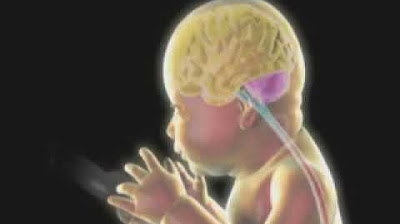2-Minute Neuroscience: Cerebral Cortex
Summary
TLDRThe cerebral cortex, the brain's outer layer, is characterized by its extensive folding into gyri and sulci, which increases its surface area for more neural components. Dominated by the neocortex, it is organized into six layers with distinct cell types and densities. The cortex is functionally divided into sensory, motor, and association areas, with the latter integrating information for complex cognitive processes like attention, planning, and self-awareness.
Takeaways
- 🧠 The cerebral cortex is the outermost layer of the brain, primarily composed of gray matter.
- 🧐 It features extensive folding to form gyri and sulci, which increases the surface area and accommodates more neural components.
- 🌐 Most of the human cerebral cortex is neocortex, a relatively recent evolutionary development in vertebrates.
- 🔍 Neurons in the neocortex are organized in six distinct layers, differentiated by cell type and density.
- 🔄 The remaining cortex consists of allocortex with variable layering and mesocortex, a transitional area between neocortex and allocortex.
- 👂 Sensory areas in the cerebral cortex process information related to sensation, including touch, pain, temperature, vision, hearing, and other senses.
- 🏃 Motor areas are involved in movement control, encompassing regions like the primary motor, premotor, and supplementary motor cortices.
- 🤔 Association areas integrate information from multiple brain regions, contributing to complex cognitive processes.
- 🔎 Parietal association areas are linked to attention and perceptual awareness.
- 🧩 Frontal association areas are involved in higher cognitive functions such as planning, impulse control, and self-awareness.
Q & A
What is the cerebral cortex?
-The cerebral cortex is the outermost layer of the brain, primarily composed of gray matter that is extensively folded to form ridges called gyri and grooves called sulci.
Why is the folding of the cerebral cortex significant?
-The folding of the cerebral cortex substantially increases its surface area, making room for more neural components.
What is the neocortex and why is it significant in the context of vertebrate evolution?
-The neocortex is most of the cerebral cortex in humans, named so because it is thought to have appeared relatively recently in vertebrate evolution.
How are neurons typically arranged in the neocortex?
-Neurons in the neocortex are typically arranged in six layers, distinguished by differences in cell type and cell density.
What are the other components of the cerebral cortex besides the neocortex?
-The rest of the cerebral cortex is made up of allocortex, which has a more variable pattern of layering, or mesocortex, which is a transition area between the neocortex and allocortex.
What is the common approach to functionally subdivide the cerebral cortex?
-A common approach is to divide the cortex into sensory areas, motor areas, and association areas.
What are sensory areas and what do they do?
-Sensory areas receive information related to sensation and include regions like the primary somatosensory cortex, primary visual cortex, and primary auditory cortex, among others.
What are motor areas and what is their role?
-Motor areas of the cerebral cortex are involved with movement and include regions like the primary motor cortex, premotor cortex, and supplementary motor cortex.
What are association areas and what functions do they perform?
-Association areas are involved in the integration of information from multiple brain regions, facilitating higher cognitive processes like attention, perceptual awareness, planning, impulse control, and self-awareness.
How do association areas in the parietal cortex contribute to cognitive processes?
-Association areas in the parietal cortex are thought to be involved with aspects of attention and perceptual awareness.
What complex processes are linked to association areas in the frontal cortex?
-Association areas in the frontal cortex are linked to complex processes like planning, impulse control, and self-awareness.
Outlines

This section is available to paid users only. Please upgrade to access this part.
Upgrade NowMindmap

This section is available to paid users only. Please upgrade to access this part.
Upgrade NowKeywords

This section is available to paid users only. Please upgrade to access this part.
Upgrade NowHighlights

This section is available to paid users only. Please upgrade to access this part.
Upgrade NowTranscripts

This section is available to paid users only. Please upgrade to access this part.
Upgrade NowBrowse More Related Video

Prenatal Brain Development

Cerebrum : Usmle Gross Anatomy || Relations and External features - Neuroanatomy animations

Brain Circuits: Harvard Medical School Researchers Crawl a Neural Network

Anatomi Cortex Cerebri

Giros e Sulcos do Telencéfalo - aula prática

Medial surface of the Cerebral hemisphere - Gyri and sulci | Neuroanatomy
5.0 / 5 (0 votes)